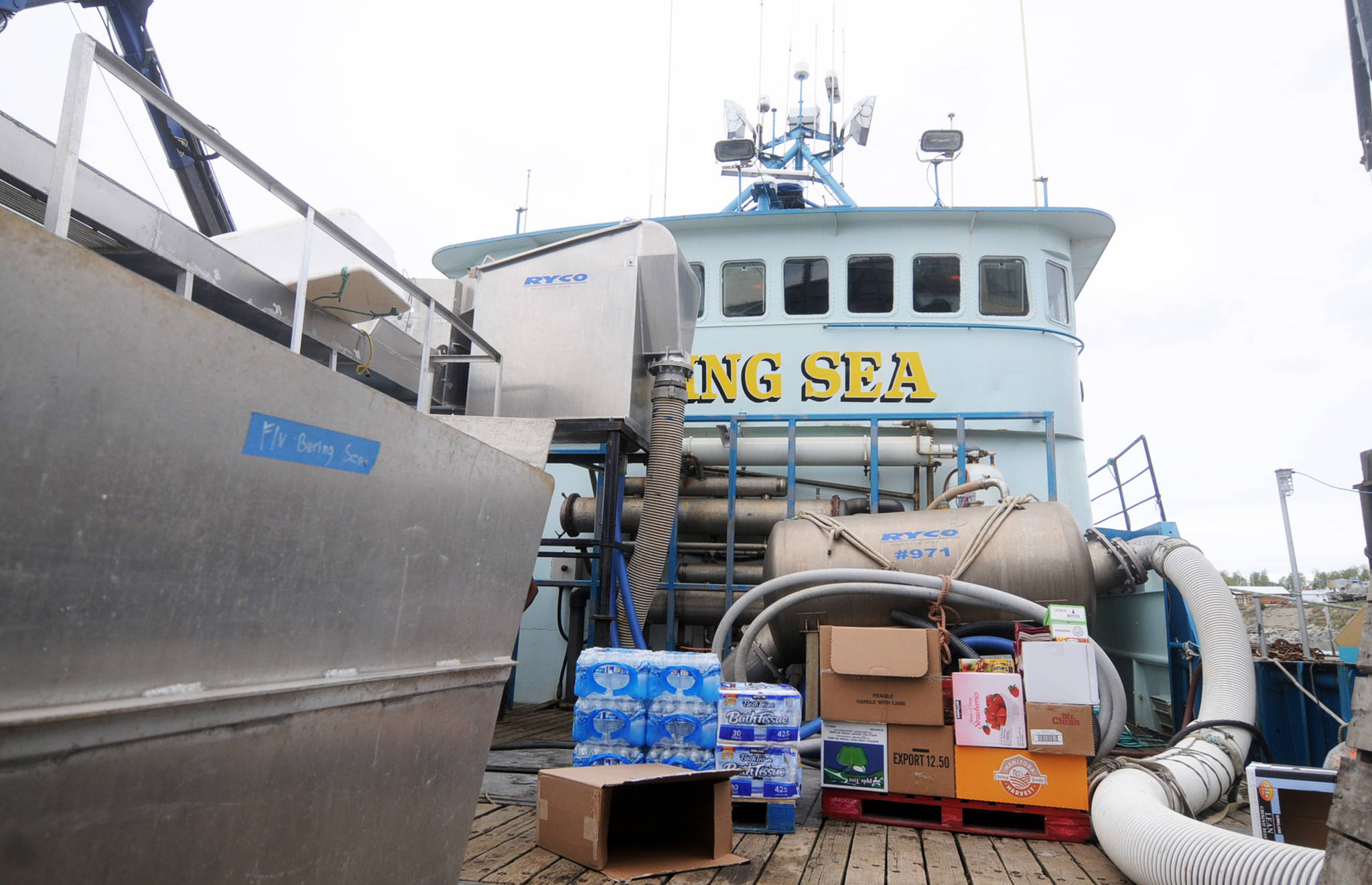Editor’s note: This story has been updated to clarify that Coastal Villages Region Fund is a federal Community Development Quota organization.
Commercial fishermen delivering to Snug Harbor Seafoods are attended by a tender vessel with a long history and more equipment than it needs for the job.
The Bering Sea, owned by Snug Harbor Seafoods, is a 114-foot retired crabbing boat of iron/steel alloy built in 1973 and originally homeported in Washington state. With wooden decks and the company’s logo emblazoned on its side, it dominates the end of the dock in the Kenai River as workers stocked it with groceries and worked to get it ready for the upcoming season last Friday.
Snug Harbor Seafoods owner Paul Dale said he bought the vessel a few years ago when it was put up for sale by Coastal Villages Crab, a subsidiary of federal Community Development Quota organization Coastal Villages Region Fund, which coordinates commercial crab fishing. The corporation holds commercial crab harvesting quota through the National Marine Fisheries Service, but when the crab fisheries’ catch limits decreased, the corporation began offloading equipment.
“They had to make choices as to which vessels to keep and which ones to sell, and this was one that went on their sell list,” Dale said.
However, the vessel wasn’t done with its crabbing career when it came to Snug Harbor Seafoods. When the crab quota amounts increased the following year, Dale said the company leased part of a quota and headed for the Bering Sea to fish for Tanner crab.
“We have crabbed two seasons ourselves with it,” he said. “We couldn’t crab this year because quotas are now low.”
That happens as the catch quotas fluctuate. Each year, the Alaska Department of Fish and Game and the National Marine Fisheries Service, which work together to manage the crab fisheries, evaluate and set a catch limit based on harvestable biomass in particular areas and determine a management strategy, including closing a crab fishery entirely if necessary.
In 2005, as a rider on a federal spending bill driven by then-Sen. Ted Stevens, the National Marine Fisheries Service implemented a system called the crab rationalization program. When the program went into place, vessel owners, processors and coastal communities received quota shares as a percentage of the annual total allowable catch in the crab fishery, adjusted each year in the form of individual fishing quotas that are set in pounds.
Over the years, the program has led to the consolidation of the crab fishing fleet. As quota owners have sold their vessels, they have begun leasing out parts of their quotas to other vessel owners, depending on how large the allowable catch is in a year.
Some studies after the rationalization program went into place identified crew employment, harvester-processor relationships and community participation as issues, according to an August 2016 community impacts summary provided to the North Pacific Fishery Management Council. Crab rationalization is still a divisive issue in many communities, the summary notes.
“A number of people and organizations remain fundamentally opposed to rationalization programs on philosophical grounds, even in some cases where there have been apparent material benefits from the program,” the summary states. “Particularly troubling to some is the perceived differential distribution of beneficial and adverse impacts in general and the specific disproportional benefit that has accrued to quota owners not otherwise actively participating in the fishery through the quota leasing process.”
The program has also led to some crab vessels engaging in other fisheries, while others stopped fishing entirely, according to the summary.
Dale said the time the Bering Sea spent out crabbing for Snug Harbor Seafoods was “great fun.” But for now, the vessel will just be delivering salmon.
Reach Elizabeth Earl at eearl@peninsulaclarion.com.

